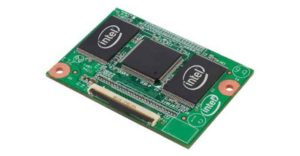Vinod Dham, who is acknowledged as ‘Father of the Intel Pentium’ and currently founding-managing director at Indo U.S. Venture Partners, has constantly reinvented himself to stay on top of the global tech industry
 He is the co-inventor of Intel’s flash memory and is acknowledged as the father of the most famous and widely used engineering product in the world – the Intel Pentium. He has over 30 years experience in Silicon Valley’s global technology industry and had the privilege of working for Intel when it was still a comparatively small, hot technology company. He is a technologist turned entrepreneur and venture capitalist. He is Vinod Dham and his career in Silicon Valley and beyond is like a road map for many budding entrepreneurs.
He is the co-inventor of Intel’s flash memory and is acknowledged as the father of the most famous and widely used engineering product in the world – the Intel Pentium. He has over 30 years experience in Silicon Valley’s global technology industry and had the privilege of working for Intel when it was still a comparatively small, hot technology company. He is a technologist turned entrepreneur and venture capitalist. He is Vinod Dham and his career in Silicon Valley and beyond is like a road map for many budding entrepreneurs.
Over the years, Dham has reinvented himself several times. While at Intel, he co-invented flash memory and then went on to lead Intel’s flagship Pentium product. He then held senior management roles at two semiconductor startups, NexGen and Silicon Spice and led both these companies to successful acquisitions by AMD (acquired NexGen for U.S. $857 million) and Broadcom (acquired Silicon Spice for U.S. $1.2 billion), respectively. Through my in-depth conversations with him, we have tried to bring to you, his learnings from numerous experiences over the last three decades.
Dham started his career at a startup when even the word ‘startup’ was not coined. It was the early 1970s and right after his undergraduate degree at Delhi College of Engineering, Dham joined Continental Devices based out of New Delhi as a hardware engineer. At the time, Continental Devices was the only silicon semiconductor startup in the country. After four years of working there, Dham moved to the U.S. for his Masters in Electrical Engineering in 1975. After a brief stint at NCR, then a leading “cash register” company, he started working for Intel in the late 1970s.
In his latest avatar, like several of his Silicon Valley colleagues, Dham is now a venture capitalist at Indo U.S. Venture Partners (IUVP) with a focus on funding early and mid-stage growth companies in India. Through his career, Dham has been a game changer of sorts. Whether it was at Intel, NexGen or Silicon Spice, Dham focused on the job at hand, delivered a top-class outcome and then moved on to his next big assignment. And, this next assignment was usually very different from the previous one.
Phase 1: The Intel saga
“In a way, in the 70s, Intel was still a very hot startup, just like Facebook is today,” reminisces Dham. In his early years at Intel, Dham worked on the flash memory team before moving to the microprocessor design division that gave the world the Pentium. He honed his skills for leading the Pentium project by working on the two earlier generations of microprocessors, Intel’s 486 and 386 in various capacities.
Like it is often believed, it was not as if Intel’s Pentium microprocessor, which is the underlying engine for a bulk of the world’s personal computers (PCs), had no competition. In the 80s, PCs had become mainstream tools for productivity enhancement at the workplace and had begun to find great acceptance amongst home users as well. By the time he took over the Pentium project, a large number of established and new players, including the AIM consortium (a consortium led by Apple, IBM and Motorola) and a consortium led by Sun Microsystems (which comprised companies like Sun, Fujitsu, Philips, Tatung and Amdahl), had begun aggressively working on their big idea for the PC industry and these projects seriously threatened Intel’s dominance in the segment.
Dham believes that Intel’s ability to “focus and execute” while maintaining full compatibility of application software with its previous generation microprocessors was the key reason for its success over dozens of these big competitors. From product development teams in California and Oregon to factories in Penang and sales and marketing teams all over the world, the entire company was focused on the success of Pentium. “For each and everyone at Intel, the success of Pentium was top-most priority. Pentium was Job 1 for Intel,” says Dham. His role as a senior executive and project leader of the Pentium chip was acknowledged world over. From the ‘Intel Inside’ brand building campaigns to delivering a top-notch product – the whole marketing mix worked brilliantly for Intel.

While I can feel the excitement in Dham as he narrates his Intel experience, I draw him back to my original question about how he compares Intel then vs. Facebook now. While both entities are not directly comparable, Dham believes there is one major difference. “At Intel, to design a microprocessor chip, the process would take years. The cost of failure was extremely high, which meant discipline and attention to detail were crucial,” explains Dham. At Facebook, developers add and remove features overnight and new applications can be coded in a jiffy. The other aspect, of course, is that when Intel was in its early stages; the entrepreneurial revolution in Silicon Valley was just getting started. The ecosystem was in its nascent phase. Says Dham, “Computer software was really at the beginning of its commercial debut. The hot area then was electronics.”
In 1995, at the age of 45, after spending 16 years at Intel and reaching the top management of the company, Dham had a “mid-life crisis” and was itching to do something different. “If you live in Silicon Valley and have not experienced life as an entrepreneur in a world of start ups, you have missed out on a very exciting learning experience!” he says.
Phase 2: Leadership at startups
By the time Dham quit Intel, he had already built a tremendous brand for himself. It was also the time when the entrepreneurial revolution in the Bay Area was at its peak. He came across a company called NexGen, a boutique processor design company that was about eight years old. He joined the company as its chief operating officer (COO). While NexGen had been operating for several years, the company lacked strategic direction.
While the design team at NexGen was very good, the company did not have a vision as to where it would fit into the overall PC industry. Dham, with his wide-ranging Intel experience, turned around NexGen’s strategy. He knew NexGen could not beat the big guns in terms of manufacturing capabilities and advanced technology. He had to build intellectual property (IP) that would piggyback on the infrastructure that had already been created by the rest of the PC industry. The features in its technology product had to be above and better than those that already existed.
Dham convinced the NexGen management to find a process technology and manufacturing partner for building its chips competitively with Intel’s. Meanwhile, Dham discovered that AMD’s (Advance Micro Devices was Intel’s main competitor in the computer hardware industry) microprocessor product, called K5, had failed to deliver on its promise. Dham convinced the NexGen management to explore what appeared to be a perfect synergy for merging the two companies – NexGen had a product but no factories and AMD had a factory, but, no product. His insights proved right and AMD acquired NexGen’s product and team for a tidy sum of U.S. $857 million. AMD’s next product, K6, was built using NexGen’s core. For a short while, it was the fastest microprocessor in the world. It was the first time ever anybody beat Intel at its own speed game.
The success of K6 was critical from one more angle – microprocessors were pricey and that meant PCs had to be sold for over U.S. $1500. Dham pursued the top management at AMD to price AMD’s K6 in order to create a sub-U.S. $1000 PC. This positioning forced Intel to respond with a truncated Pentium under the brand name Celeron. Of course, today desktop computers are priced at less than U.S. $300, but, AMD’s ability to give relevant competition to Intel has played a key role in this price reduction. And, knowingly or unknowingly, Dham played a critical role in the success of K6, which triggered off the rivalry.

After spending a year at AMD post-acquisition, Dham was ready to get back into, in his words, “the extreme sport” of working in a startup. In April 1998, he joined Silicon Spice, as its president and chief-executive officer (CEO). Silicon Spice was initially experimenting with using an innovative “reconfigurable” technology to design chips. It turned out that the chips designed in this fashion lacked the necessary performance and cost to be of much use. Meanwhile, Dham learnt from dealing with several customers that there was an emerging need for developing chips that could effectively transfer voice over the Internet.
Dham explains, “The Internet protocol was being used mainly for data and delivering voice over the Internet, which was designed primarily for data transfer was a tricky problem in terms of technology.” Dham redirected the company to build this new chip to support VoIP (Voice over Internet Protocol), among the first in the world at that point of time. In a little over two years (in August, 2000), Broadcom acquired the company for a whopping U.S. $1.2 billion in an all-stock deal. “I must say we benefitted from high valuations created by the dotcom boom. The deal was Broadcom’s largest ever (at the time of acquisition) and its seventh acquisition in the year 2000. “One of the biggest lessons I learnt was that it always helps to start defining your product with very early involvement with customers,” says Dham.
Phase 3: Betting on entrepreneurs
Sometime in 2001, Dham made a trip to India where he met several business leaders including Azim Premji of Wipro. He was intrigued by the success of India’s information technology (IT) services industry and was wondering what it would take to recreate the U.S.-India model for hardware and chip design companies. His first fund, New Path Ventures, raised around U.S. $125 million from other venture capital funds in the Valley. After officially launching in April 2002, it operated on an incubator-like model. The idea was to fund three or four ideas in the hardware design space with development teams in India and product definition, sales and marketing teams in the U.S. It invested in companies like Telsima (WiMAX chips for broadband), Montalvo Systems (low-power chips) and InSilica (chips for multimedia and digital printing processors).
Dham, with his partner at the fund, Tushar Dave, was extremely hands-on in helping these companies in day-to-day operations. The timing was right, with Silicon Valley looking at reducing expenditure in the chip development space. The experience highlighted the challenge of finding top quality talent for hardware design in India. With so much focus on software, India had not yet developed the critical mass of skills for chip design work to meet global standards. Larger established corporations subsequently acquired these portfolio companies.
Having learnt that the opportunities for venture backed startups in India will revolve more around services required to meet the needs of India’s growing consumer class, Dham founded a cross-border India-focused fund, IUVP, in 2006. Currently, Dham runs IUVP with his two Bengaluru-based investment partners Vani Kola, a serial entrepreneur, and Kumar Shiralagi, an ex-Intel Capital Group executive. IUVP’s focus has been on investing in Indian companies across sectors including mobile technology, knowledge process outsourcing, Internet, education and healthcare. Dham also believes that the model of outsourcing that is fairly large scale in IT services and software can be recreated in other value added ‘knowledge sectors’ like finance, healthcare, education and legal fields.
So, is Dham having more fun on the other side of the table as an investor? “Investing is fun, but, it was lot more exhilarating being an entrepreneur” says Dham. “The amount of energy that goes into making just one idea a success, in a do or die situation, is that much more exciting.”
What next for Vinod Dham? For now, he is focused on the near-term. “We have deployed most of the capital from IUVP, it is now time to harvest that investment. We are working towards getting our portfolio companies bought or ready for an IPO,” he says. The lessons on “focus and execution” that Dham learnt at Intel are ingrained in his mind. He refuses to make his next move, without delivering a great outcome in his current role.
